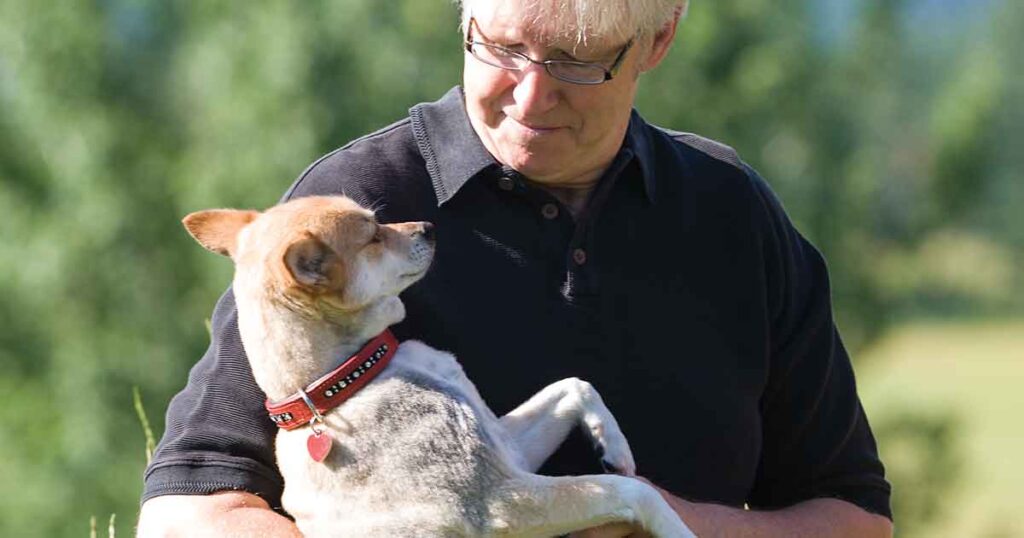
“Veterinarians should routinely ask clients about their pets’ responses to storms,” says Pamela Perry, DVM, a behavior resident at Cornell University College of Medicine in Ithaca, New York.
Ask clients what happens during a thunderstorm. Does the cat hide? The dog tremble? Those mild fears can worsen over several thunderstorm seasons. Waiting to treat them can make the problem that much more difficult to manage. Be preemptive and recommend treatment promptly, while signs are still at the subtle stage.
“They might be coming in for something totally unrelated to storm phobia, but they mention that the dog is fearful during storms or that their other dog at home has storm phobia,” says veterinary behaviorist Lore Haug, who practices in Sugar Land, Texas. “I’m like, ‘You need to get on top of that right away.’”
Suggestions can be as simple as suggesting setting up a safe room or getting the pet a snug-fitting wearable that may have a calming effect.
Know how to advise clients on setting up a safe room. It can be a small guest bath or closet with no windows, a basement, or something as simple as a crate with a cover thrown over it. Their pet may choose his own safe space, such as inside the bathtub. Wherever it is, it should be ready and available at any time.
Clients should encourage pets to go there by placing a stuffed Kong or treat-filled puzzle toy in the room daily so the animal knows that good things happen in that room. Remind clients never to close the pet in the room or crate, which can create a feeling of being trapped. If owners know a storm is expected during a time they won’t be home, they should prepare the room by putting a long-lasting treat or favorite toy in it, turning on a white noise machine or other noise blocker, and plugging in a pheromone diffuser.
Be familiar with product options for pets fearful of storms. Calming clothing includes Thundershirts, Storm Defender Capes, Anxiety Wraps, Mutt Muffs, and Calming Caps. Depending on the product, they fit snugly on the body, providing soothing pressure; reduce storm-related static charges; or limit the pet’s exposure to scary storm-related sights and sounds such as lightning and thunder. Recommend drowning out storm sounds with white noise machines, the whirr of a box fan, or relaxing music such as Through A Dog’s Ear or Through A Cat’s Ear. Certain nutraceuticals and pet foods contain soothing ingredients such as l-theanine, caseins, L-tryptophan, and B vitamins and are marketed for pets with storm-related fears.
“Resources like that are easy for owners to implement and don’t require a huge behavior modification program,” Dr. Haug says.
Finally, be familiar with the client’s lifestyle and environment. If medication is needed, that information will help you determine the best choice for that particular animal.
“Make a choice about the effect you want to have happen, what medication fits with that, and how it can work in the owner’s lifestyle,” says veterinary behaviorist Lisa Radosta, who practices in West Palm Beach, Florida.
For instance, some owners are in and out but have a flexible schedule that allows them to premedicate a pet if a storm is in the forecast. For that owner, Radosta says, “I’m going to send her home with Sileo because that works fast and she’s generally going to be home to administer it.” For owners who are gone all day, she might suggest long-lasting clonazepam or gabapentin.
“Make a choice,” she says. “Don’t just throw a drug at it because you like it.”
This article was reviewed/edited by board-certified veterinary behaviorist Dr. Kenneth Martin and/or veterinary technician specialist in behavior Debbie Martin, LVT.






